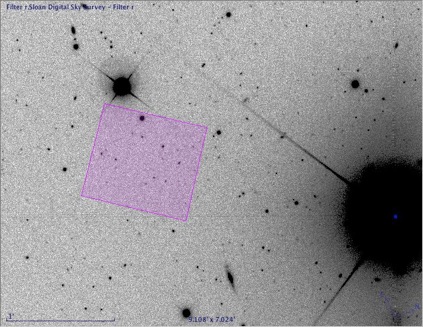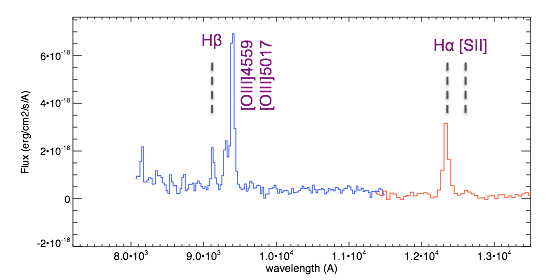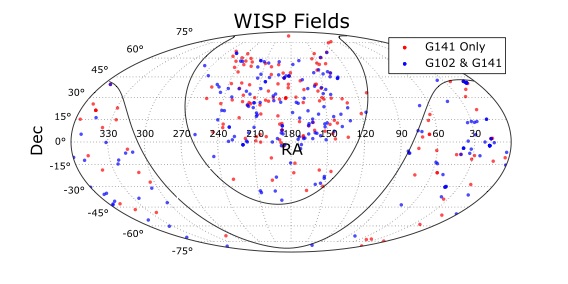
WISPS
WFC3 Infrared Spectroscpic Parallel Survey
Background
The WISP slitless spectra reveal star-forming galaxies and accreting super-massive black holes over a redshift range 0.3<z<2.5, spanning a large fraction of cosmic history. The Figure on the right is a montage of 180 spectra of High-EW galaxies, showing some of the emission lines measured by the WISP survey (Atek et al. 2011).
WISP is a "pure parallel" Hubble survey, meaning that other research teams are simultaneously using Hubble to study Quasars and White Dwarfs with the Cosmic Origins Spectrograph (COS) and Space Telescope Imaging Spectrograph (STIS). While these researchers obtain their data, we turn on the Wide Field Camera 3 (WFC3) in a random "parallel" field, offset by a few arcminutes from the primary COS/STIS science target. This parallel arrangement is a very efficient method for surveying the universe, maximizing the amount of science which can be achieved with Hubble's limited time.
The above figure shows an example spectrum of a High-EW galaxy. The blue corresponds to the G102 grism and the red to the G141 grism. The emission lines are marked and labeled.


COS QSO

WFC3 Parallel

5.5’
SDSS r’
The WISP survey is using ~1000 orbits of Hubble Space Telescope (HST) to obtain slitless spectra in the near-infrared of over 385 blank fields (~1500 square arcminutes). The figure below shows the location of these blank fields.

